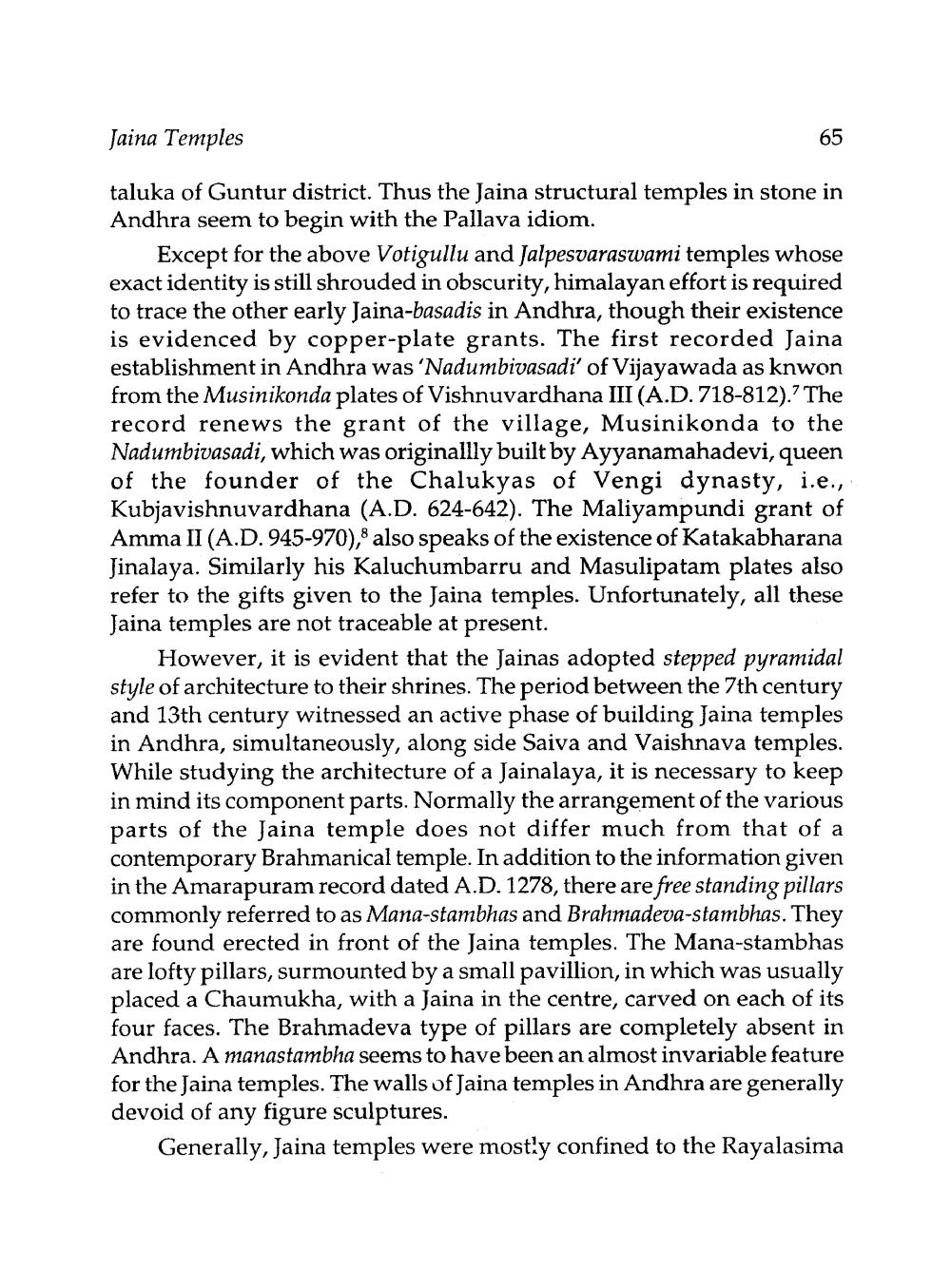________________
Jaina Temples
taluka of Guntur district. Thus the Jaina structural temples in stone in Andhra seem to begin with the Pallava idiom.
65
Except for the above Votigullu and Jalpesvaraswami temples whose exact identity is still shrouded in obscurity, himalayan effort is required to trace the other early Jaina-basadis in Andhra, though their existence is evidenced by copper-plate grants. The first recorded Jaina establishment in Andhra was 'Nadumbivasadi' of Vijayawada as knwon from the Musinikonda plates of Vishnuvardhana III (A.D. 718-812). The record renews the grant of the village, Musinikonda to the Nadumbivasadi, which was originallly built by Ayyanamahadevi, queen of the founder of the Chalukyas of Vengi dynasty, i.e., Kubjavishnuvardhana (A.D. 624-642). The Maliyampundi grant of Amma II (A.D. 945-970),8 also speaks of the existence of Katakabharana Jinalaya. Similarly his Kaluchumbarru and Masulipatam plates also refer to the gifts given to the Jaina temples. Unfortunately, all these Jaina temples are not traceable at present.
However, it is evident that the Jainas adopted stepped pyramidal style of architecture to their shrines. The period between the 7th century and 13th century witnessed an active phase of building Jaina temples in Andhra, simultaneously, along side Saiva and Vaishnava temples. While studying the architecture of a Jainalaya, it is necessary to keep in mind its component parts. Normally the arrangement of the various parts of the Jaina temple does not differ much from that of a contemporary Brahmanical temple. In addition to the information given in the Amarapuram record dated A.D. 1278, there are free standing pillars commonly referred to as Mana-stambhas and Brahmadeva-stambhas. They are found erected in front of the Jaina temples. The Mana-stambhas are lofty pillars, surmounted by a small pavillion, in which was usually placed a Chaumukha, with a Jaina in the centre, carved on each of its four faces. The Brahmadeva type of pillars are completely absent in Andhra. A manastambha seems to have been an almost invariable feature for the Jaina temples. The walls of Jaina temples in Andhra are generally devoid of any figure sculptures.
Generally, Jaina temples were mostly confined to the Rayalasima




